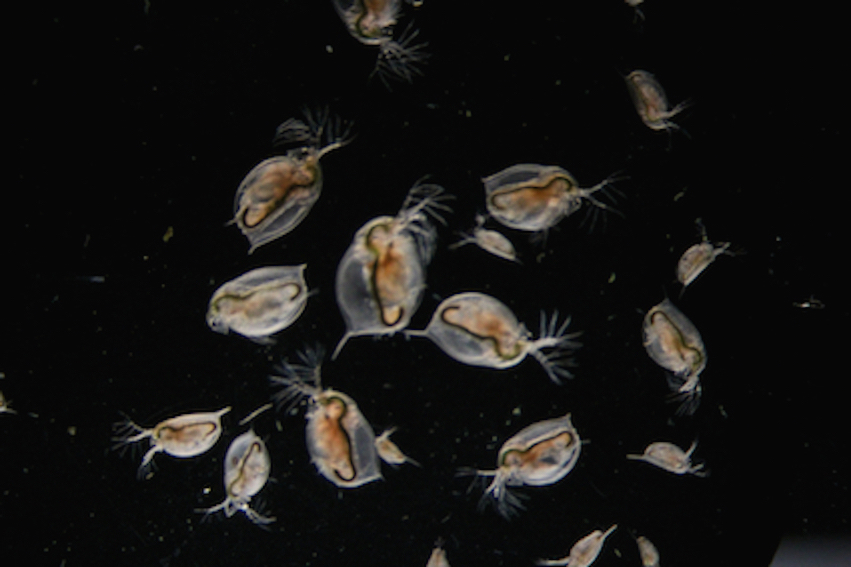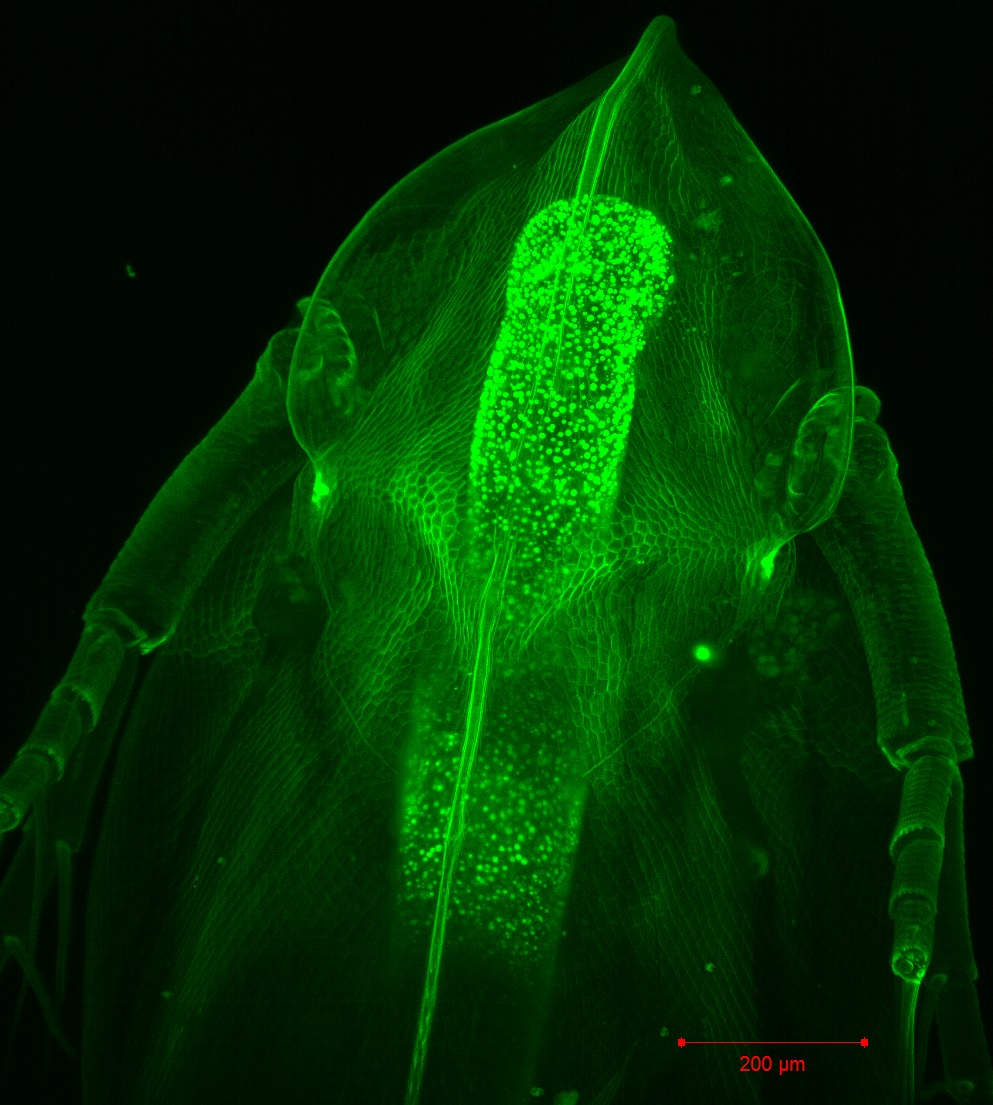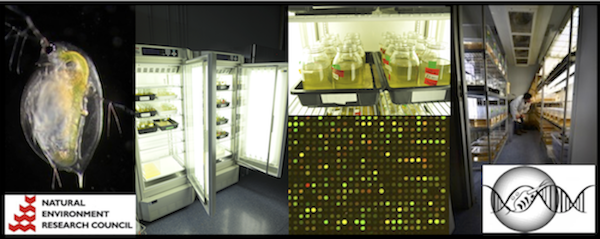
Dr Ewan Harney (post-viva) demonstrating his finely tuned Daphnia dissecting skills

The evolution of maturation thresholds
A maturation or developmental threshold is simply a minimum size, age, or state that must be achieved before maturation can occur. Studies of plants, insects, crustaceans, amphibians, fish and mammals have all found evidence for the existence of maturation thresholds. However, the mechanisms underlying maturation thresholds or the reason that they have evolved in the first place is unclear.
In a NERC funded PhD, Ewan Harney investigated how to model probabilistic maturation reaction norms in Daphnia (in collaboration with Dr Tom Van Dooren, Paris). He also investigated whether thresholds are fixed or plastic, and how variation in threshold position influences fitness in D. pulex.
PAPERS
Harney E., Van Dooren, T.J.M., Paterson, S., & Plaistow, S.J. (2013) How to measure maturation: a comparison of probabilistic methods used to test for genotypic variation and plasticity in the decision to mature. Evolution, 67(2), pp. 525-538
Harney E., Plaistow, S.J. & Paterson, S (2015) Transcriptional changes during Daphnia pulex development indicate that the maturation decision resembles a rate more than a threshold. Journal of Evolutionary Biology, 28(4), pp. 944-58.
In a NERC funded PhD, Ewan Harney investigated how to model probabilistic maturation reaction norms in Daphnia (in collaboration with Dr Tom Van Dooren, Paris). He also investigated whether thresholds are fixed or plastic, and how variation in threshold position influences fitness in D. pulex.
PAPERS
Harney E., Van Dooren, T.J.M., Paterson, S., & Plaistow, S.J. (2013) How to measure maturation: a comparison of probabilistic methods used to test for genotypic variation and plasticity in the decision to mature. Evolution, 67(2), pp. 525-538
Harney E., Plaistow, S.J. & Paterson, S (2015) Transcriptional changes during Daphnia pulex development indicate that the maturation decision resembles a rate more than a threshold. Journal of Evolutionary Biology, 28(4), pp. 944-58.





